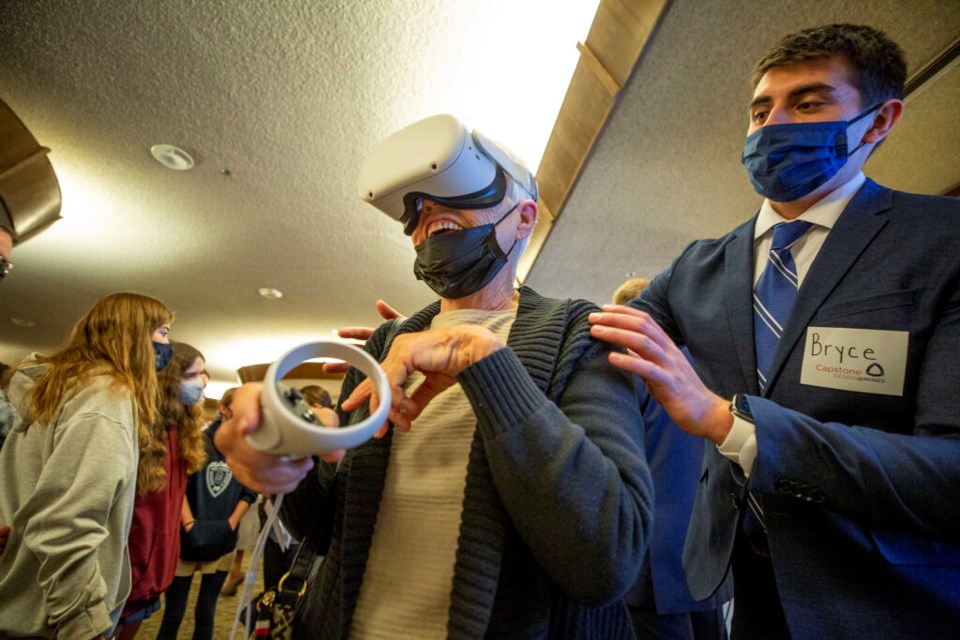Editor’s note: This story was originally published by CPR News and was shared via AP StoryShare.
It’s the end of the fall semester at Colorado School of Mines in Golden, and all the makings of a classic science fair are on campus. For their final projects, groups of seniors were asked to figure out solutions to problems that included making avocado farming more efficient to autonomous transports for lunar surface missions.
Each team worked with a paying client who helped guide their vision. The list of clients included private companies, non-profit organizations and government agencies. Some groups had individuals sponsoring their projects. One man just wanted someone to realize his dream of building a hybrid between a bicycle and a kayak. It’s called a “biyak.”
Grace Ford worked with the Mines admission team, who saw a decrease in college tours during the pandemic. Her team set up with a virtual reality headset and drivable camera showcasing virtual tours of the campus for those who can’t travel.
“Say you're states away and you don't have thousands of dollars to fly out and go see a college. This allows you to have the tools to do so,” Ford said.
Four teams worked on an issue particularly relevant to Colorado: improving accessibility in outdoor recreation. Electrical engineering student Matt Tyler’s group wanted to find new and more enjoyable ways for skiers with vision impairments to experience the slopes.
“Currently existing methods include Bluetooth audio or tethering,” he said. “Tethering is very restrictive to the skier or snowboarder. And Bluetooth audio has some issues such as high latency and [there's] more room for error.”
Eventually, the group designed a vest that uses vibrations controlled by a seeing person who can relay directions.
All the groups designing products for disabled people were made up of able-bodied students. Tyler says the responsibility to get things right despite living without a disability was part of the challenge.
“I think just having an open line of communication with your disabled client is just extremely important because obviously none of us know what it's like to truly not be able to see,” he said.
One corner of the presentation room was occupied by a twelve-foot-long modular bridge, built by a group tasked with mitigating the effects of natural disasters. Wildlife officials can backpack out to a trail that sustained damage, carrying relatively lightweight pieces of the bridge, which can then be constructed on-site and reach up to 40 feet in length once assembled.
“[Our client] wanted something that a group of people could put on their backs and then hike out to a remote location, put up, leave in place for up to six months until a more permanent solution can be put in place,” said senior Erik Allder.
Across the room, another group tried to prove environmental solutions don’t have to be massive in scale. Josh Callahan was at his team’s table holding an old Xbox controller. He built a training simulation for a small drone outfitted with a thermal camera that lets it detect fires. The simulation will train firefighters on how to use a real drone his team built after talking with small fire departments about last year’s historic wildfire season.
“This is kind of how we see it being used in the real world where a small fire department that can't quite afford a $10,000 or a $100,000 drone system can afford our about $2,500 drone system,” Callahan said.
Several of the products, especially the accessibility ones, will have to go through numerous tests and regulatory checks to ensure they’re safe and viable for potential clients. But some, like Ford’s virtual tours, could go public sometime next year.


.jpg;w=120;h=80;mode=crop)
